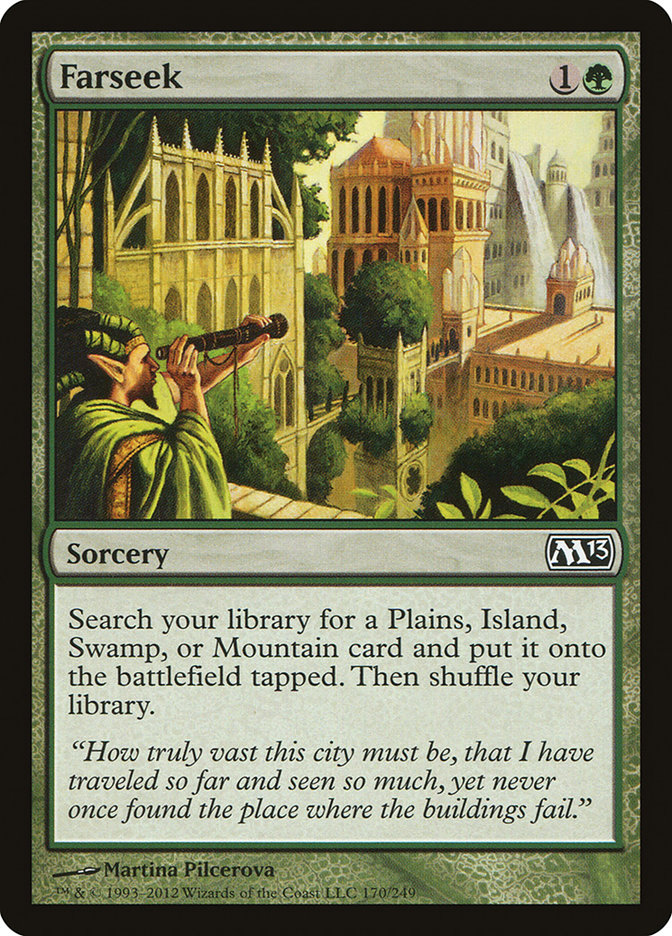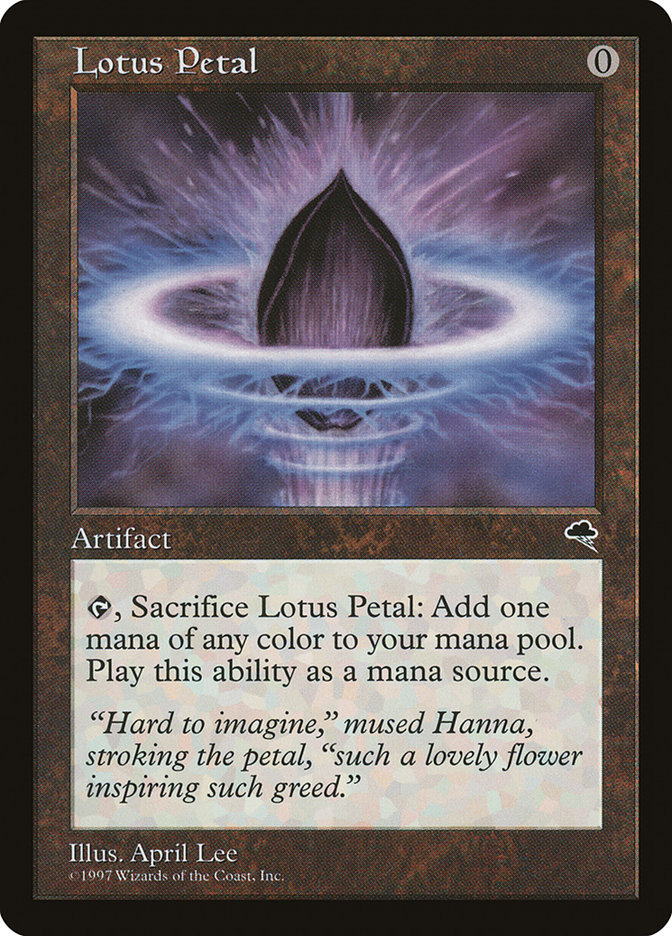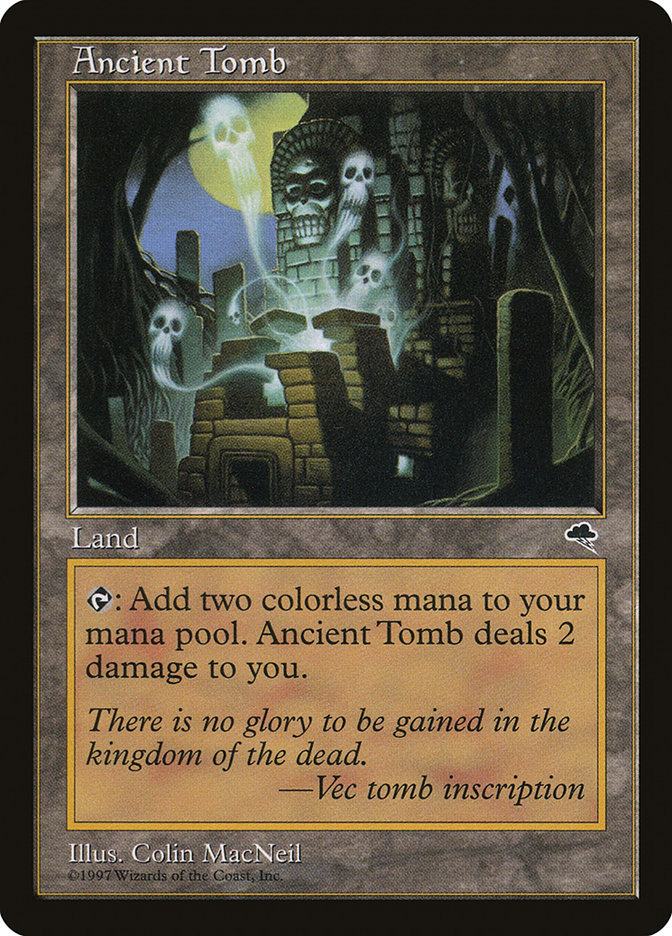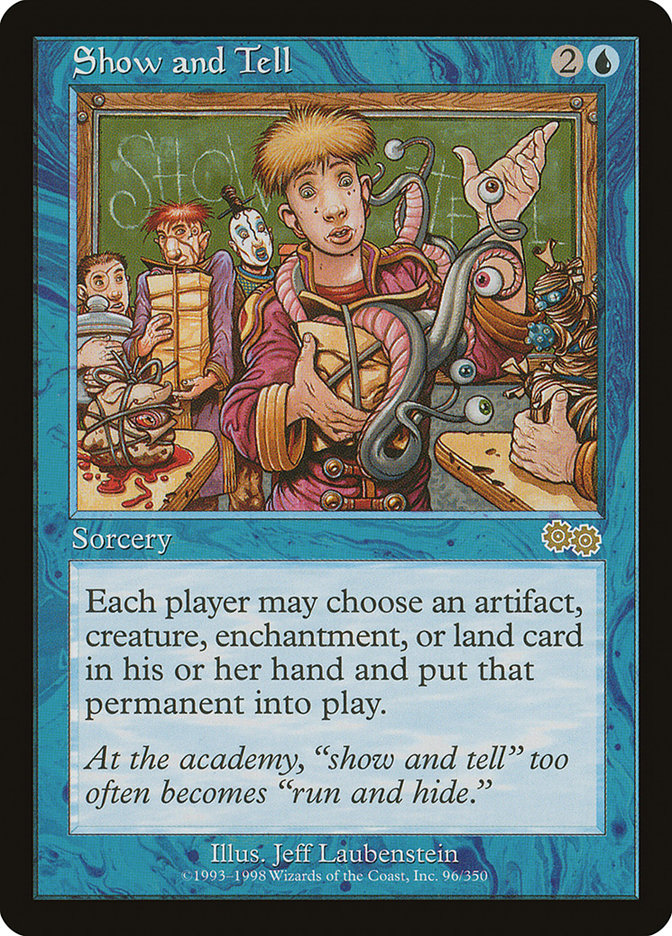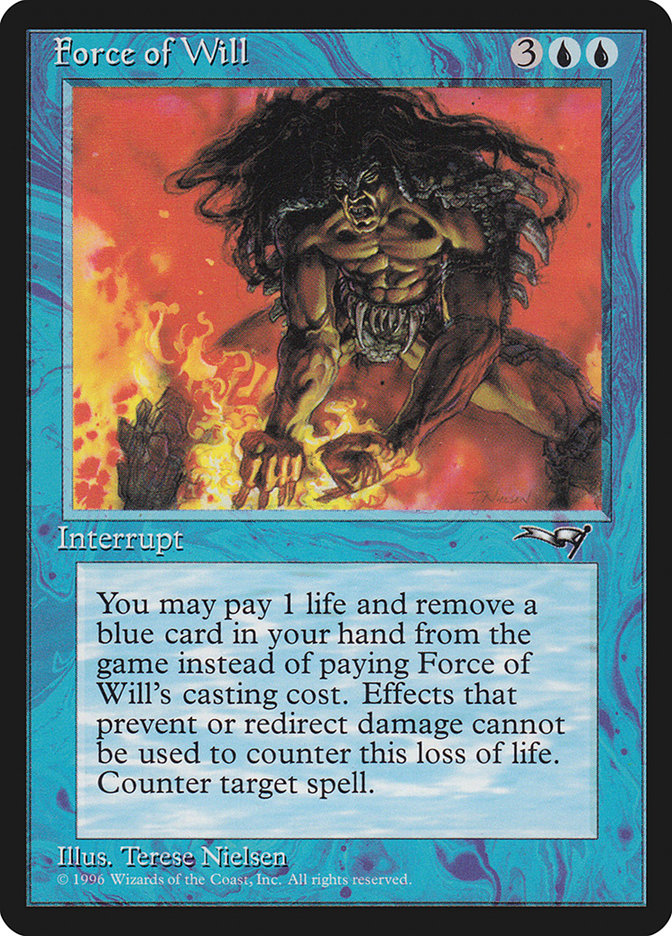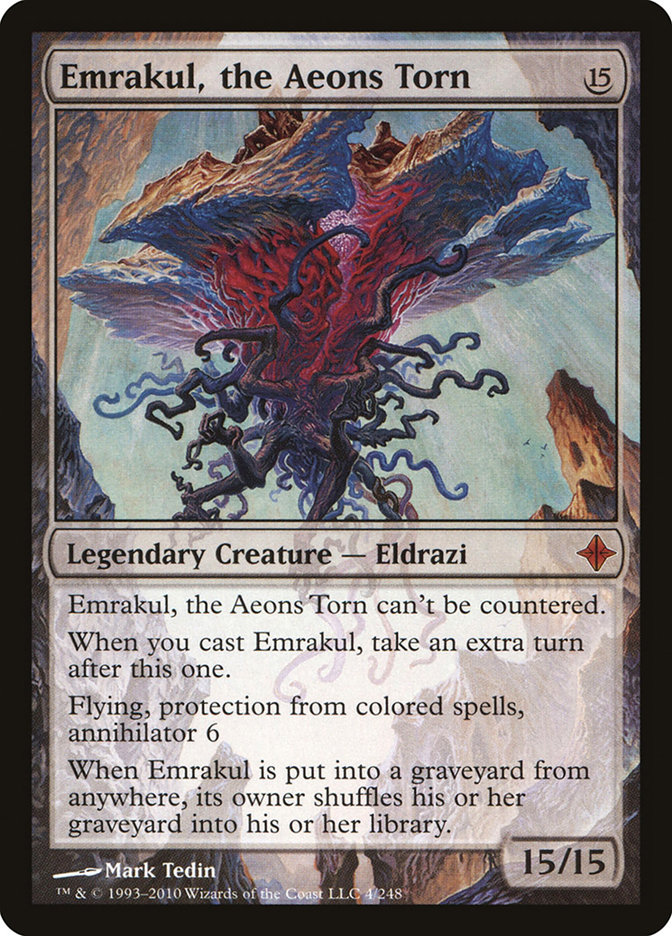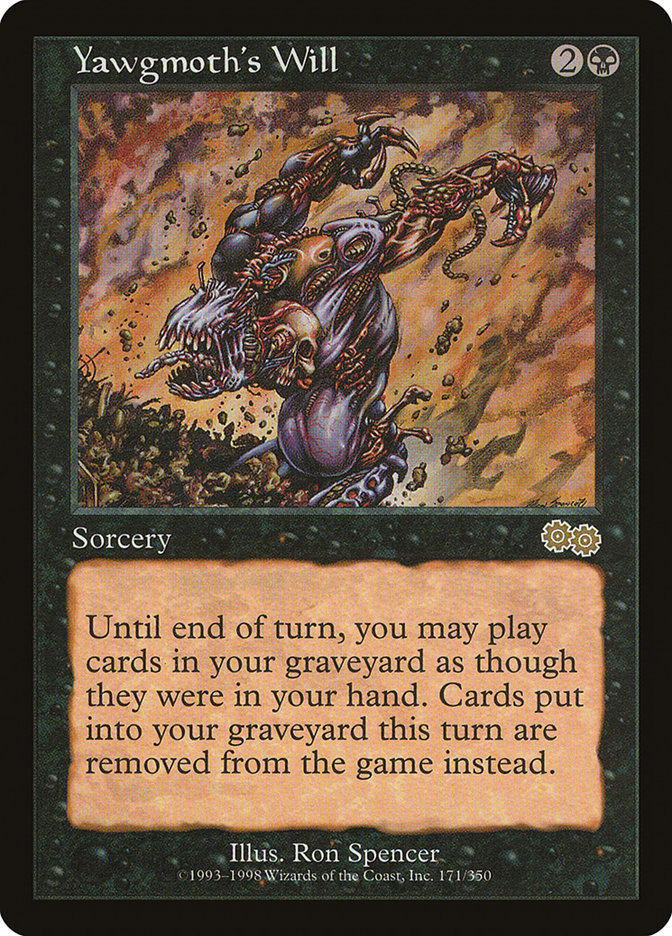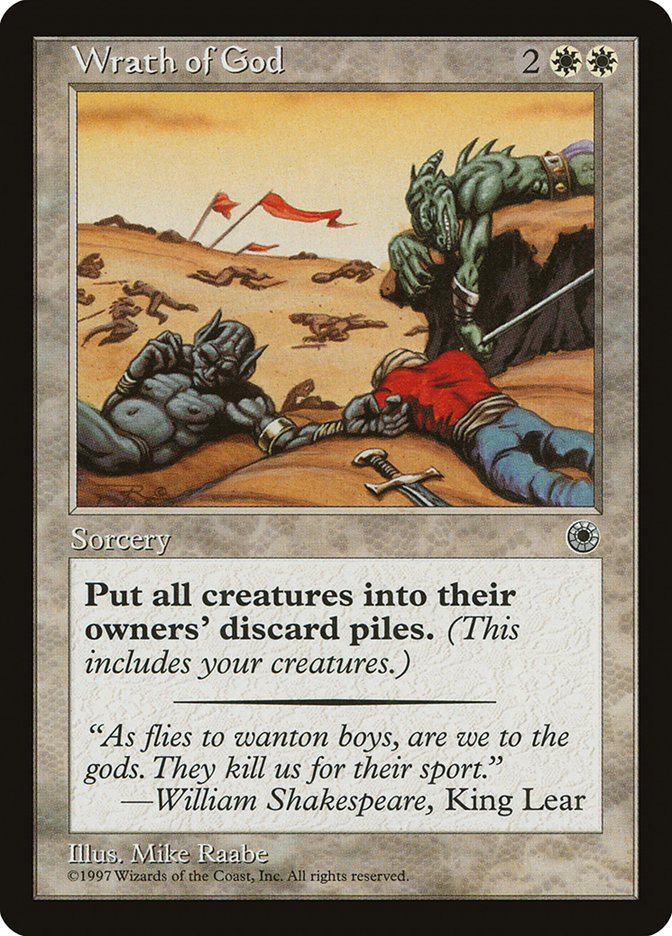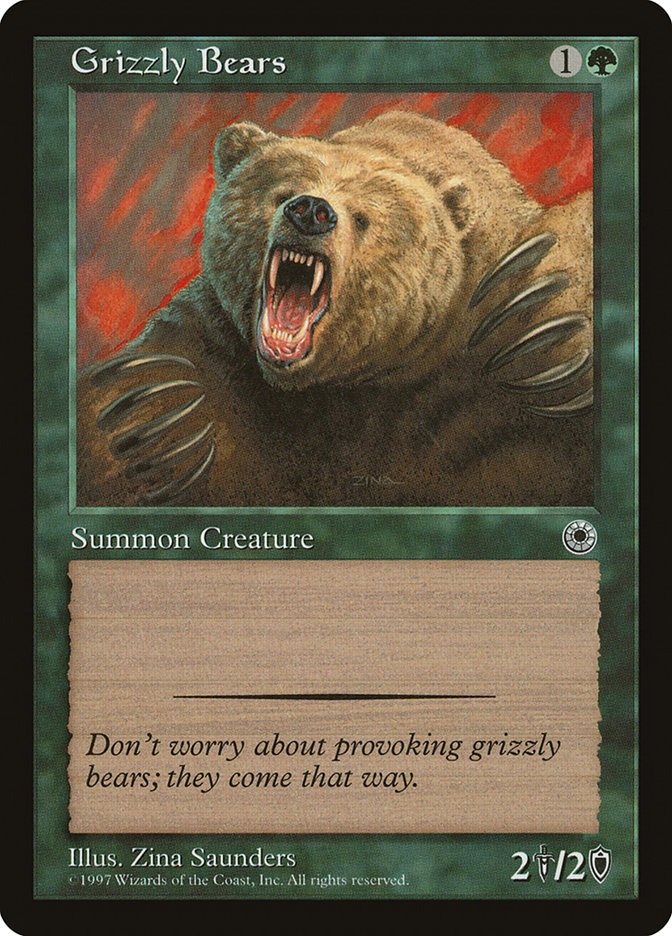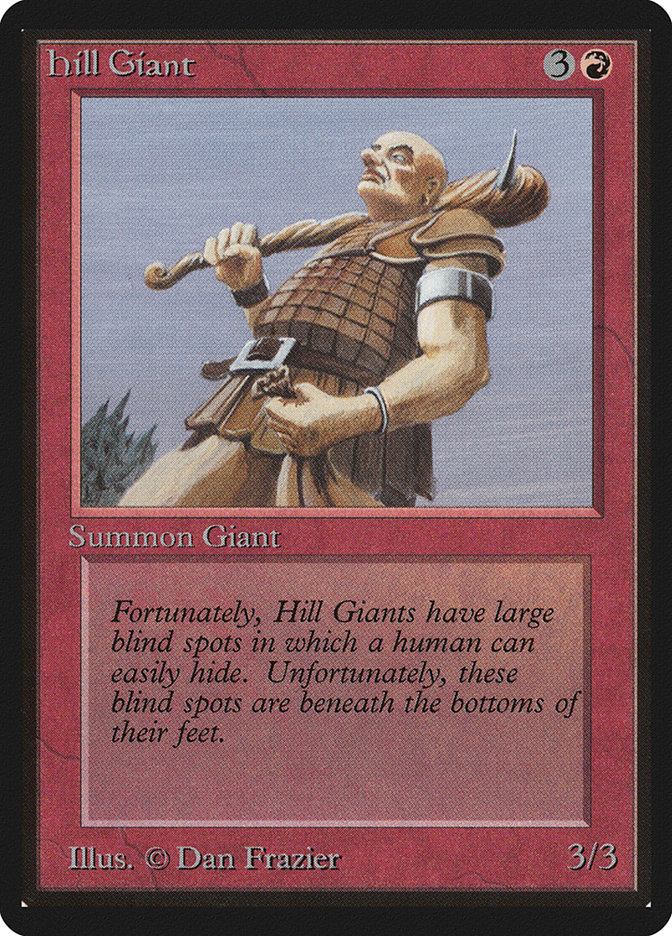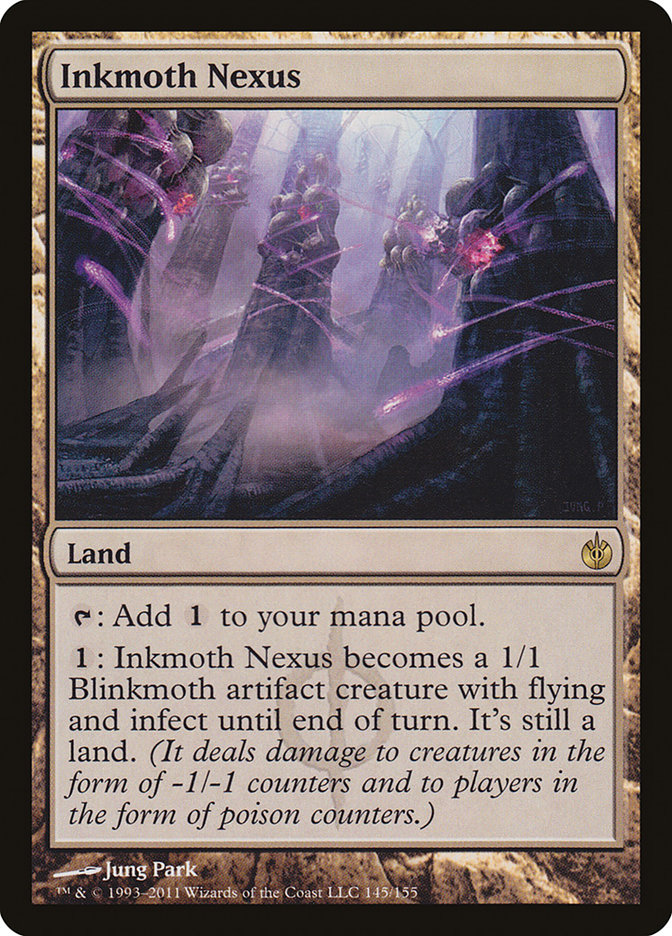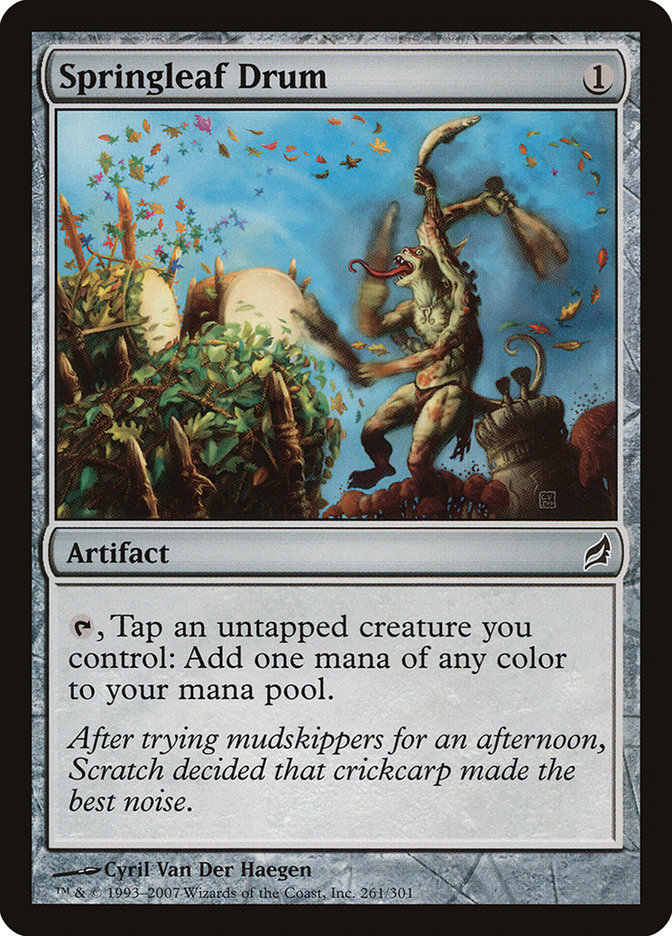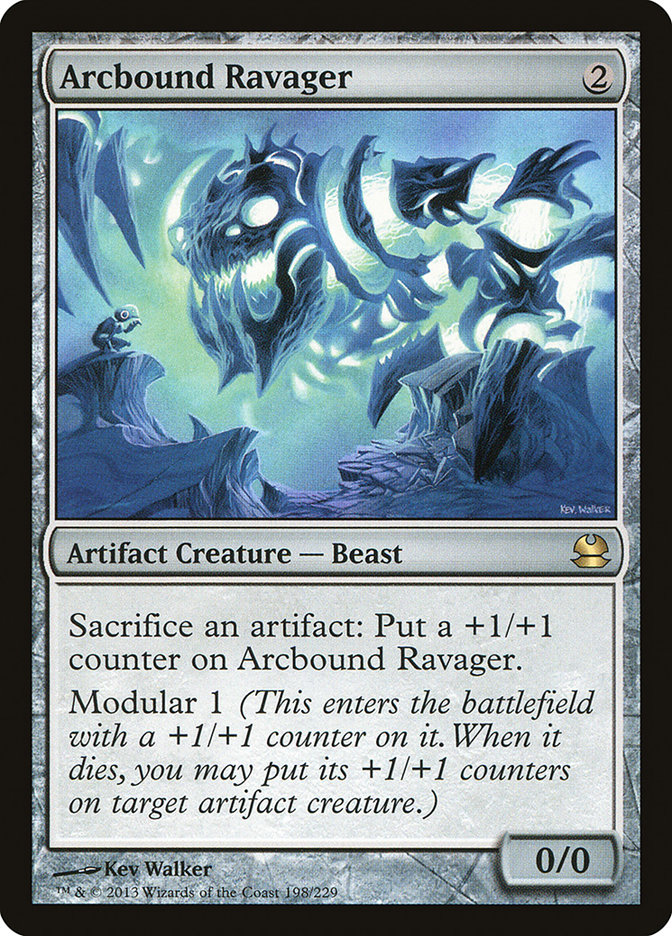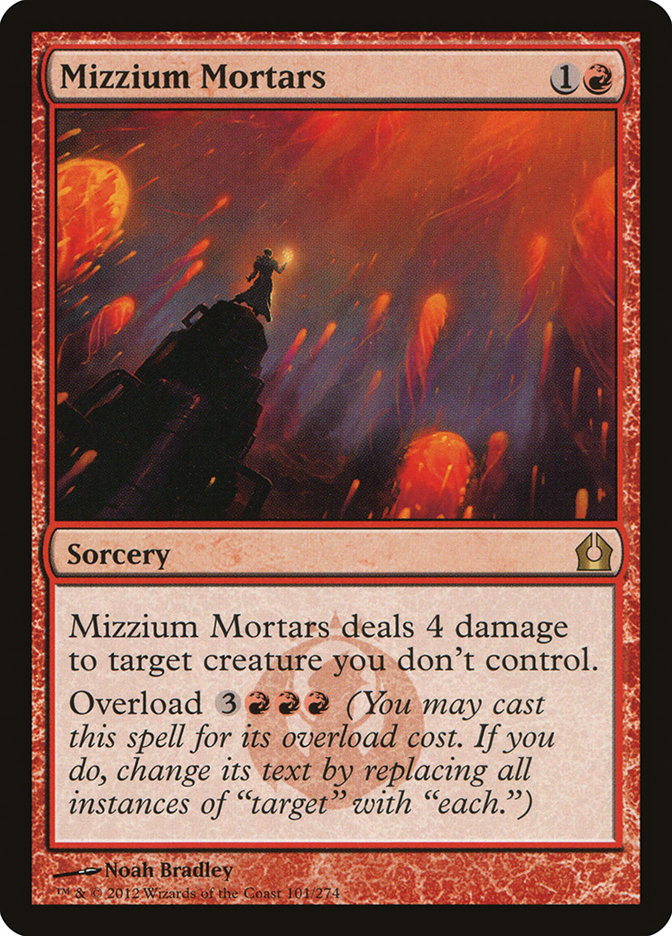Today’s article is for the grinders trying to level up and the tons of new players who are breaking into the tournament scene and trying to figure some things out.
The key to being good at Magic is __________.
To be motivated? To work hard? To keep at it? To practice hard?
Basically, insert any cliche slogan one might typically find on a motivational poster in a junior high classroom into the blank space and the statement is likely more true than false.
However, I am not positive that any of these statements are actually 100% accurate. You see, the only way to actually be good at Magic is to make good plays a very high percentage of the time.
It is certainly true that proper motivation, hard work, and practice will likely improve one’s ability to make good plays with higher frequency, yet trying hard doesn’t necessarily guarantee an individual the know how or ability to actually succeed.
Let’s talk about how to make good plays.
What is a good play in Magic, and how might a player go about making one?
Good gameplay is rooted in a strong fundamental understanding of how the game of Magic operates.
Everybody knows (I hope!) that players start with 60- or 40-card decks, twenty life points, and that each player gets to draw one card and play one land per turn. These ground rules are important because they frame how games play out. On turn 1, a player can cast a card that costs one mana, on turn 2 they can cast a card that costs two mana, and so on and so forth. A player knows that they can continue to draw cards from their deck during their draw step to continue to play lands and spells as the game goes on.
One of the most intriguing elements of Magic is that the individual cards often break the ground rules of the game, thus adding to the complexity of the game. For instance, Farseek is a card that allows its caster to break one of the most basic rules of the game: only play one land per turn.
Broken.
Combo decks excel at breaking the fundamental rules of the game. I will use an exaggerated example from Legacy:
Turn 1:
Also broken.
The contents of this hand produce a fifteen-cost "I win the game machine" on the first turn defended by a free counterspell.
The reason I make note of these elements is because they are important to the big picture in understanding how Magic works.
When a player is playing a game with a Draft or a Sealed Deck (and I am not talking about Jon Johnson’s Combo Cube but actual Limited with booster packs), it is extremely unlikely that one has to worry about getting turn 1 Emrakuled. The ground rules of how Limited works simply do not allow for these types of interactions to take place.
The number one most important thing a player needs to know in order to make good plays are the general rules that govern gameplay in the format they are playing.
A good example of this is from years and years ago during Champions of Kamigawa Booster Draft where a friend of mine, Josh Franklin, was drafting for the first time. Josh was a really solid Vintage player back in the day, and Vintage was basically the only format he ever played.
In the first game he played, both players played out a bunch of cards, and his opponent attacked (probably with a combat trick in hand) with a bunch of creatures into his board of a bunch of creatures. Josh considered his options and decided to make no blocks, taking approximately ten damage with no real plan of action.
Where there’s a Will, there’s a way, but Josh’s Draft deck was short on Tinkers, Wills, and Bargains . . .
He couldn’t counterswing because he couldn’t produce close to lethal damage, his deck didn’t contain any Wrath of God effects, and he was basically going to be pigeonholed into the exact same board state next turn. Obviously, his play here is bad, and the key reason is because he didn’t understand the ground rules for how Limited creature combat works. He needed to be making attacks and blocks, he needed to understand how creature combat worked, and he needed to understand that in Limited life totals matter!
In Vintage (or at least the brand of Vintage he played, TPS and Gifts Combo back then), creature combat is irrelevant, and life totals are basically irrelevant unless reduced to zero.
The moral of the story is that if a player doesn’t understand the basics of how a format works, there’s basically no way to consistently make good plays.
Understanding what the popular and most powerful strategies are in a format is really important because it allows a player to anticipate what his or her opponent’s next plays are likely to be and what types of cards they will need to overcome in order to be victorious.
Taking into consideration an opponent’s strategy and the cards they are likely to be playing with, here is how I would very generally define a good play:
A good play is one that gains or maintains the most relevant advantage possible and also mitigates risk of strong pushback from the opponent.
Basically, good plays gain a player a foothold in some arena of the game but are not unnecessarily risky given the circumstances.
The Relevance of the Advantage
Keep in mind also that the relevance of the type of advantage in a given matchup is really important. If a player is playing a red deck, a situation might arise where that individual has the option on turn 3 to cast Ball Lightning and attack or to cast Pillage and destroy one of their opponent’s lands. Both of these plays might progress the game favorably for the red mage, so in this specific case that player would need to decide given the matchup and the board state what is actually more relevant to the game: dealing more damage or the opponent having fewer lands.
"To Ball, or not to Ball: that is the question."
In a situation where the red mage is racing another player and is perhaps behind in the damage race, playing a Stone Rain might be irrelevant and essentially wasting a turn, whereas against a control or combo deck destroying their mana could simply make them lose a turn by having to play a land just to get back to where they were.
Another good example of relevance of advantage being really important comes into play in a matchup where certain types of cards or effects are going to be irrelevant. For instance, a player is playing a Modern Jund deck against a combo deck that cannot realistically race, and they are presented with the option of playing Dark Confidant or Tarmogoyf on the second turn.
 |
vs. |
 |
A good Jund player should identify that the type of relevant advantage in this matchup is going to be whether or not they can find enough disruption to stop the combo deck before it hits its critical mass. Card advantage is the most relevant advantage it can push, and therefore the Dark Confidant is going to be the play.
Obviously, turn 2 Dark Confidant has a lot of upside because the quicker you get it into play the more card advantage it will produce. However, sometimes the cards are not necessarily what matters.
In another matchup, the Jund player is on the draw, and their opponent has turn 1 Kird Ape. On the Jund player’s turn, they cast Thoughtseize and take the opponent’s Tarmogoyf. On the next turn, the opponent casts Strangleroot Geist and attacks for four. In this situation, the Jund player probably needs to cast Tarmogoyf and not Dark Confidant to start blocking to prevent dying to damage. Tarmogoyf’s big beefy body is more relevant in this situation than the card advantage from Dark Confidant.
The relevance of the types of advantage that are important vary from matchup to matchup. For more in depth information on this topic, I highly recommend reading Mike Flores‘ article Who’s the Beatdown? if you haven’t already.
The Risk / Cost of the Advantage
Imagine a player already has a bunch of creatures on board against a Standard U/W deck and keeps casting creatures onto the battlefield. On one hand, playing more creatures continues to push that player’s advantage, which is good. However, it also makes that player much more vulnerable to a sweeper like Supreme Verdict.
Everyone who plays Magic has heard the age-old adage "don’t overextend into a wrath!" When I frame my example in these simplistic terms, it’s very obvious that this is the case.
Very rarely do scenarios come up in the real world that are as cut and dry as my previous example. Learning from one’s mistake is a big part of improving our ability to make good plays, and for most people it basically only takes one time of needlessly overextending and losing to a sweeper to make a strong enough impression to not do it again.
"Ouch! Stove is hot!"
Another easy example of this philosophy (that I see on at least a weekly basis) is the ol’ "blow my removal spell on anything that moves" routine.
This one actually happened to me today in a draft online. I am on the play and don’t have a two-drop, and on his second turn he casts Drudge Beetle. On my third turn, I cast Wind Drake and pass. On his turn, he untaps, plays Ultimate Price on my Wind Drake, and attacks me for two, so I untap and play Viashino Shanktail, which means he can basically never attack again.
Removal spells (especially high-quality ones like Ultimate Price, Murder, and Putrefy) are something players should be conservative with unless they have an excess of removal spells clogging up their hand and no other plays to make.
A good rule of thumb is that if an opponent can only trade and will still be behind on the board, in many cases it is better to accept the trade and wait for a better card to Murder.
The risk vs. reward element is at work in these kinds of situations.
If I have three 2/2s and my opponent has one 2/2, I have the option of killing their creature and attacking for six life instead of four. However, I am running the risk that they will untap, play a 3/3, and simply stonewall my entire team with one card.
The Importance of the Clock
In Magic, "the clock" refers to how many turns a player has left to live if they don’t interact with an opponent’s cards in play.
If player A is at ten life and has no blockers in play and player B has a 3/3 Hill Giant in play, it can be said that player B has player A on a four-turn clock because the Giant if not answered in some way will end the game by attacking four times. If on player A’s end step Player B were to cast Selesnya Charm and make a 2/2 Knight Token, the clock would speed up from four turns to two turns (because each attack step now deals five damage instead of three).
Pretty simple. But don’t worry, it gets much more complicated.
In Magic, figuring out and being able to predict and understand what kind of clock one is on is an important skill to have in one’s arsenal. Understanding "the clock" is what makes racing an opponent possible.
Racing is when two players are both being aggressive and trying to attack or combo each other to death at the same time. Most games of Magic involve racing of some fashion, which is why understanding how to identify what kind of clock you or your opponent is on is important.
Remember the scenario about the three 2/2s vs. one 2/2 from above? If the opponent is at a high life total, casting Murder on a 2/2 is bad if we can’t produce another creature that same turn because our attack knocks them down to twelve life. If they play a 3/3, we could theoretically attack our team into the 3/3, losing one each time. The first attack knocks him down to eight (costing us a 2/2) and the second down to six, but now we will only have a 2/2 in play.
In that scenario, we cannot produce a clock that will win the game if they have any respectable creature that we would need a Murder to remove.
The winner is determined by the speed of the Bear player’s clock
However, if our opponent is at a lower life total, it might actually be a good play to Murder their 2/2. For instance, if our opponent were at ten life, casting Murder on their 2/2 improves our clock up from a two-turn clock to a one-turn clock, and it is a one-turn clock that requires that they play two blockers in order to survive our onslaught of three 2/2s. The initial attack for six drops them down to four, and our opponent will need to deal with two of our three 2/2s in order to survive our next attack step.
I watched a game of Modern today in a tournament where an Affinity player mulliganed on the play to an awesome hand against a Goryo’s Vengeance deck.
On turn 1, he played out most of his hand:
A nice mulligan to six with Blinkmoth Nexus in hand.
The opponent played Blackcleave Cliffs and cast Faithless Looting, discarding Emrakul, the Aeons Torn and a land.
On the Affinity player’s next turn, he drew Cranial Plating, played it, equipped it to the Arcbound Ravager, and attacked for six after tapping a Nexus to activate itself. After attacking, the Affinity player had the Reanimator player on a two-turn clock.
The better play would have been to play the Blinkmoth Nexus, activate the Nexus, and then sacrifice the Mox Opal, Springleaf Drum, Ornithopter and then Ravager to itself to move the four +1/+1 counters onto the Inkmoth Nexus and attack for five infect damage. This line of play puts the Reanimator player on a one-turn clock to do something or lose the game.
What ended up happening was on the Reanimator player’s next turn he cast Pentad Prism and passed. The Affinity player made his second attack, and then the Reanimator player untapped, played a land, and cast Through the Breach, putting Emrakul, the Aeons Torn into play, and attacked twice with Fury of the Horde to win the game.
Whether the Affinity player just didn’t understand the matchup, the difference in the clock, or whatever, the better play was certainly to go for the two-turn kill. Generally when I play Affinity, I won’t be unnecessarily aggressive when it comes to sacrificing all of my cards in an excessively risky situation, but against a Reanimator deck there is no risk involved in going all-in on Inkmoth Nexus because Reanimator has no way to interact with the card outside of comboing off.
"How To Count To Ten 2013"
Would I advocate sacrificing my board to build a Nexus on turn 2 if my opponent had played a Verdant Catacombs and passed on the first turn?
Hell no!
That play would have been much too risky given the information, and there are simply too many things that could go wrong. In response, the opponent could crack their fetchland and cast Lightning Bolt or Path to Exile on my Nexus, basically ending my game.
I like this example as a "putting it all together" scenario because it puts together all of the concepts we have discussed so far in regards to making a good play in a game of Magic.
Relevance – What was important in this game was racing and having the fastest clock.
Advantage – Being able to produce a turn 2 5/5 Inkmoth Nexus and attack with it.
Risk – The Reanimator deck has no outs (outside of winning on turn 2) to actually punish this play.
Playing From Behind
One thing I would like to specify is that just because a player makes good plays doesn’t mean they will always win the game. It is unfortunately very possible to make suboptimal plays and still win games and matches of Magic. Fortunately, there is strong evidence to support that players who make good plays do in fact tend to win more than players who don’t.
Not every good play is a dashing, exciting tap of the mana that blows an opponent out and ends up instantaneously winning the game for the home team. Good plays are calculated and designed to add up over time in order to give a player the best chance of winning the most over time.
Most players who have a fundamental understanding of Magic don’t have too tough of a time figuring out how to win when their hand is awesome, their plays are basically out of a textbook, and their opponent stumbles.
On the play:
Turn 1: Rakdos Cackler. Turn 2: Burning-Tree Emissary, Burning-Tree Emissary, Lightning Mauler, attack for six. Turn 3: Flinthoof Boar, Haste, attack for eleven. Turn 4: Just for the yucks, Hellrider, take a million. Oops, too fast for Supreme Verdict.
Most players struggle in games that are very closely contested or when they are losing. Games that are close or that are being fought from behind are obviously more difficult because in these types of games one’s good options are drastically reduced. Often there looks like there are no good options available at all.
What’s a player to do when nothing is jumping off the page looking like a good way to start winning or even stop losing?
The general rules for making good plays do not stop applying just because a player is losing and no particular currently available play makes that player start magically winning.
One element that begins to come into play when a player is behind and the cards they already have at their disposal do not allow them to win the game is that the player is going to need to draw help at some point to win the game.
For instance, if I am at six life with no cards in hand and only a 1/1 Mons Goblin Raider in play and my opponent is at ten life with no cards in play and a Grizzly Bears in play, given this board state I cannot win this game without getting help from my draw step. I am losing the race by a lot and am on a four-turn clock (because I can chump block with the Raider).
If I draw four basic Mountains in a row, I will lose this game for sure. However, in this situation, things are pretty straightforward, and I think that even the worst of decks would have an out to a 2/2.
Most board states are going to be significantly more complex than the aforementioned one, especially in Standard where there are a lot of cards that generate multiple permanents or die and make tokens.
When a player is behind on the board (meaning the clock dictates they cannot race successfully yet), that player needs to become aware of the cards they need to draw in order to not lose and eventually win the game and then play to those outs.
For instance, if an opponent’s life total is sufficiently high that racing is simply not an option and a bigger army with a game-winning clock is already in place, a player’s only out might be to topdeck Mizzium Mortars to destroy all of the opponent’s creatures. The player might be able to use their cards to prolong the clock by a turn by using a singular removal spell on a creature up front to turn a two-turn clock into a three-turn clock, thus giving that player an extra turn to draw their must-have card.
"Sometimes you need to draw a bomb to get back in it."
People occasionally get into the line of thinking that they want to save the removal spell because if they do draw the Mizzium Mortars, they will be up a removal spell in their hand, but sometimes it pays to use the removal spell up front in hopes of giving yourself an extra third turn to catch your card.
A lot of times, especially with inexperienced players, once things begin to go downhill, they start making plays that don’t make any logical sense because they have either mentally given up and decided they are going to lose or because they don’t understand what outs they need to be playing to.
If you’ve got a Supreme Verdict or Mizzium Mortars in your deck, there’s no need to start throwing material in play or in hand away randomly. You’d rather make calculated plays to buy you the most time and the least upfront cost in order to catch your card.
Even if you’re losing, you can still try to press whatever small advantages you might have on a losing board state. If you cannot win a damage race, you should be focusing on destroying the opponent’s resources that will provide them further card or board advantage, such as planeswalkers and creatures that net card advantage.
Summing Up
Six tips to remember that will help lead to good play making:
1. Know thy enemies – To have any hope of making good, strong plays in a game of Magic, it is necessary to know the decks and the cards that your opponents will be playing against you. It is necessary to know not only one’s own deck but also the other decks, what cards they play, and what they do.
2. Make advantageous plays – In Magic, players should be looking to make the play that puts them the furthest ahead. After all, the most common way to win is to seize an advantage, continue pressing it, and ride it to victory. Any real play will gain you advantage (I don’t count Murdering my own creature for no good reason a real play), but not all plays are created equal. When in doubt, err on the side of being aggressive.
3. Understand what is important – Different types of resources will be more or less important in different matchups. It is important to identify which resources are most important from game to game and use one’s cards to capitalize on achieving these different strategic objectives. Whether it be mana production, card advantage, board presence, card selection, disruption, or simply life totals, figure out what is actually important and fight over that!
4. Mitigate risk – Desperate times call for desperate measures! However, players should avoid making plays where the risk doesn’t justify the possible reward. Going all in when it isn’t necessary and hoping an opponent just doesn’t have anything is a great way to lose a game for no good reason.
5. Pay attention to the clock – It’s important to know how close both players are to actually winning the game and doing everything possible to tip the scales of time in one’s own favor. If you’re ahead, it’s good to make plays that increase the speed of the clock by a turn; if you’re behind, you should be looking to make plays to extend the opposing clock.
6. When behind, play to your outs – Don’t give up! When a player is losing, they have an even smaller margin for error than when they are winning. Try to think about cards or sequences of cards that could be drawn that will turn the tide of battle and then make plays that will buy you time and capitalize on drawing these cards.
Cheers,

